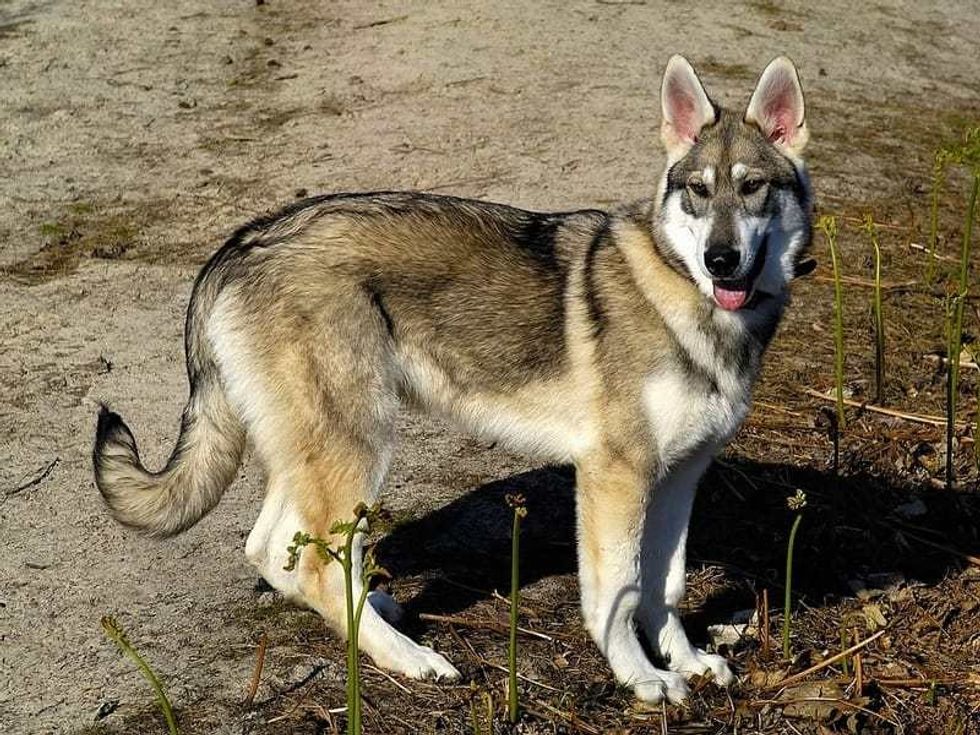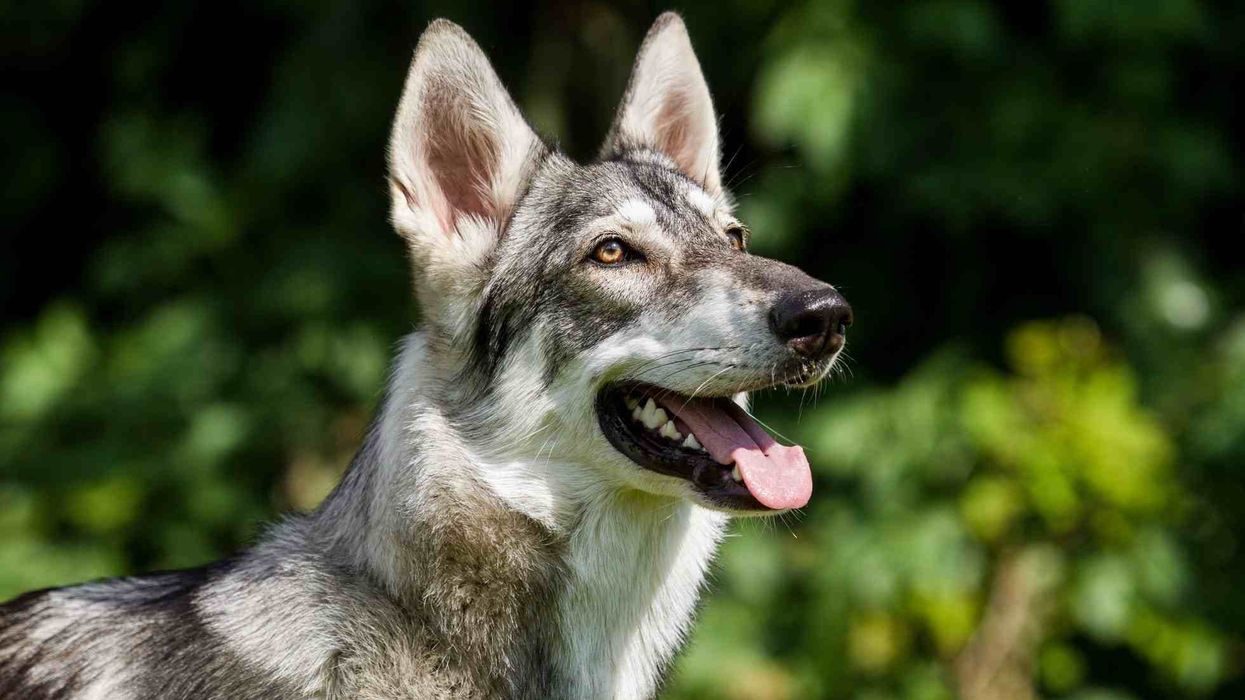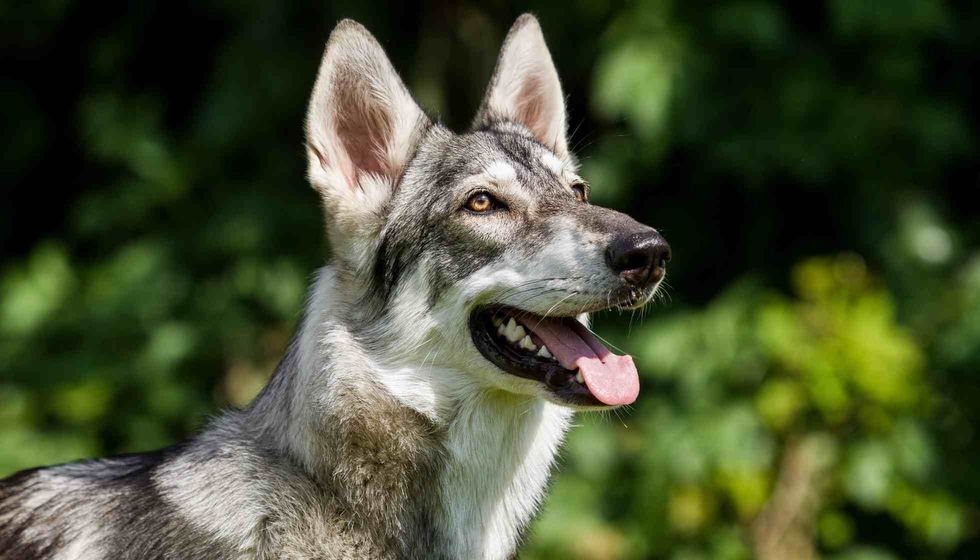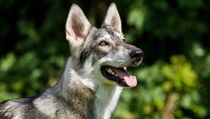Fun Northern Inuit Dog Facts For Kids
In the modern world, we come across plenty of designer items, be it dresses, home decor, food and what not? But ever heard about a designer dog, wild and fierce in appearance like that of a wolf, and yet calm, familial and absolutely fit to be your friend ?
Well, the Northern Inuit dog is one of them. Apart from the wolf-like appearance, they have nothing in common with wolves and are actually considered to be a mixed breed of debated ancestry.
Husky, Malamute and German Shepherd dog are their ancestors. With their double coat, they are best suited for all types of environments.
The Northern Inuit dog breed makes a great fit for family dogs due to their calm nature and intense loyalty towards humans. They are, however, susceptible to separation anxiety, and usually prefer a fellow pet dog wherever they are housed.
Though they are a little stubborn for training, they can easily suffice with experienced pet keepers. Northern Inuit dog's average lifespan is 12-15 years, and this can be improved slightly through proper diet, regular exercise, and focused training.
Yes, you guessed it right! These are the Ghost and Summer dire wolves from 'The Game of Thrones' TV series. After you've read these facts about the Northern Inuit dog, you mat also read about Kunming wolfdog facts and Australian Retriever facts.
Northern Inuit Dog Interesting Facts
What type of animal is a Northern Inuit dog?
Northern Inuit dogs, along with its breed lines, the Tamaskan dog, the British Timber dog and the Utonagan, is a dog breed that has a wolf-like appearance, and known to have mixed origins.
Namely, their origins are from Alaskan Malamutes, German Shepherds, Siberian Huskies and possibly Samoyeds. The perks associated with Northern Inuit dogs are great, they have no similarities to wolves and are extensively loyal, friendly and gentle animals, perfect to be housed as a pet dog.
They can also be trained in doing various tasks by experienced pet parents and love to be around other canine companions.
What class of animal does a Northern Inuit dog belong to?
Northern Inuit Dog, known as a mixed breed of unknown ancestry of dogs, belong to the mammal class with a wolf-like appearance and characteristics of a domestic dog.
How many Northern Inuit dogs are there in the world?
There are no accurate estimates of the total number of Northern Inuit dogs in the world and they are considered a rare species.
Where does a Northern Inuit dog live?
Northern Inuit dogs are termed as extremely friendly and loyal beasts which make them a perfect fit to be housed as a companion dog. They display highly familiar behavior towards humans and love to be around other canine companions in the same house.
Northern Inuit dogs can also grow highly depressed if left alone, and usually face separation anxiety. Hence, they require complete assistance, care, regular exercise to boost their physical and mental health otherwise they grow bored and lethargic if left alone.
What is a Northern Inuit dog's habitat?
Northern Inuit dogs prefer to live in cold conditions and thrive in open space. They are extremely familial and loyal beasts which make them perfect to be housed as a pet dog.
Their exquisitely familiar nature towards humans prevents them from being kept as a watchdog. Confined areas are not suitable for them as they love to play around and prefer to be housed with fellow canine animals.
Who do Northern Inuit dogs live with?
Northern Inuit dogs, epitome of calmness, friendliness and loyalty, live with humans as a companion dog and prefer to live in a house with other pets. They are also extremely good with children.
How long does a Northern Inuit dog live?
Northern Inuit dogs are considered to be healthy and athletic dogs. They have a life expectancy of 12-14 years which can be increased with proper grooming, training and exercise.
Northern Inuit dogs are meant to be trained as leaders and love to work.
They require regular exercise for a good physical and mental health lest they should grow bored and lethargic confined indoors.
With proper grooming in the form of brushing and combing the coat every alternate day, trimming the nails, cleaning ear wax and regular brushing of teeth to avoid dental problems, Northern Inuit dogs can have a long and promising life expectancy.
How do they reproduce?
Northern Inuit dogs are known to reproduce through breeding, with the female dog giving birth to an average litter size of 6-10 Northern Inuit puppies on completing of the mating process.
What is their conservation status?
Northern Inuit dogs are known to be a rare species, and the Northern Inuit dog are mostly kept as a companion dog in houses and, hence, have no potential threats as of now.
Northern Inuit Dog Fun facts
What do Northern Inuit dogs look like?
Northern Inuit dogs are large, athletic beasts with the appearance of grey timber wolves. They are taller in size than German Shepherds, larger than their Siberian Husky ancestors but smaller than the Alaskan Malamute.
Northern Inuit dogs are found in a variety of coat colors, including, wolf gray, red gray and black gray.
Some of the most commonly seen variations are Albino Northern Inuit dog, black Northern Inuit dog, and white Northern Inuit dog.
With almost almond shaped eyes, in yellow, brown or amber, plus they have a straight bushy tail and thick double coat. They usually measure around 23-32 in tall at shoulder and typically weigh between 79-110 lb, with females being slightly smaller than the males at 23-28 in of height and 50-84 lb in weight.

How cute are they?
The details of their wolf-like appearance are clear evidence of how cute Northern Inuit dogs can be. The Northern Inuit dog puppies are absolutely cute creatures besides being gentle and familiar to humans which make them a perfect fit for companion dogs.
How do they communicate?
Northern Inuit dogs are highly social animals and love to communicate with humans and fellow canine groups. They use the common auditory methods for communication, like whines, howls, barks, whimpers, and so on. With proper training, their communication skills can be greatly improved.
How big is a Northern Inuit dog?
The large, athletic dogs, Northern Inuit dogs are slightly taller in size than German Shepherds. A Northern Inuit dog size is substantially larger than their Siberian Husky ancestors but smaller than the Alaskan Malamute.
They usually measure around 23-28 in tall at shoulder and typically weigh between 55-88 lb, with females being slightly smaller than the males. Male Northern Inuit dogs are more heavy set with broader heads and a heavier bone structure.
How fast can a Northern Inuit dog run?
Northern Inuit dogs are highly energetic and athletic animals and love to run around which makes them a fit for drawing sledge. They can also be trained in various tasks and possess leadership qualities.
An average Northern Inuit Dog can run up to a speed of 35 mph over short distances. Two long walks a day are essential to ensure the fitness of these friendly dogs and to save these guard dogs from various health problems.
How much does a Northern Inuit dog weigh?
Northern Inuit dogs are known to be heavy, athletic beasts with an average weight of around 66-99 lb for males and 55-84 lb for females. The weight can vary according to the exercise, training, diet and grooming. It is an active breed that has moderate exercise requirements.
What are their male and female names of the species?
Northern Inuit dogs belong to the family of dogs and hence the males are called dogs while the females are known as bitches.
What would you call a baby Northern Inuit dog?
Northern Inuit dogs are known to have mixed origins namely, Alaskan Malamutes, German Shepherds, Siberian Huskies and possibly Samoyeds and, hence, their young ones are called puppies.
What do they eat?
Like most dogs, Northern Inuit dogs are carnivores and feed on raw diet of bones, meat, eggs and such foods.
Do they howl?
Northern Inuit dogs are known to have mixed origins, namely Alaskan Malamutes, German Shepherds, Siberian Huskies, and so they have a higher tendency to howl than bark. However, early training can play a great role in addressing these characters of the Northern Inuit dogs as it is an active breed.
Would they make a good pet?
A Northern Inuit dog temperament is known to be gentle, friendly and loyal, making them to be one of the best pets for young children. They are extremely loyal towards humans who pet and train them and form the best companion dogs.
Known to crave constant companionship with humans, Northern Inuit dogs grow depressed at being left alone.
They love to be around other pets in the same house and require regular exercise and training to boost physical and mental health, otherwise they can grow bored and lethargic. These dogs are highly intelligent and strong willed, making them suitable as guide dogs after suitable obedience training.
Did you know...
Northern Inuit dogs are known to be highly familiar, loyal and healthy animals. Because their ancestors are a hearty breed, they don't suffer serious health concerns. However, as they are a new breed, much hasn't been discovered regarding their health issues and the ones that are known are hip dysplasia, epilepsy and degenerative myelopathy.
Hip dysplasia is a common condition among large and giant sized Northern Inuit dogs where the ball and socket in their hip function abnormally and the hip bones grind and rub together despite smooth motions. As a result of these, the hip may wear down and joints can deteriorate completely leading to loss of mobility.
Epilepsy is a brain-related disorder in Northern Inuit dogs which may arise due to genetic defects, brain formation issues, and environmental conditions, causing a change in their behavior.
Degenerative Myelopathy affects the back and spinal cord in Northern Inuit dogs, causing a loss of function in the back legs. It affects mostly those between the age of 8 and 14, due to immune system attacks damaging the fiber and nerves in the spine.
Regular exercise and training can cure Hip dysplasia and Epilepsy to some extent but unfortunately no cure has been found for degenerative myelopathy.
The average age for Northern Inuit dogs is in the range of 12 - 14 years, though in some cases it can go up to 15 years as well.
Having your own Northern Inuit dog
The Northern Inuit puppy cost ranges between $1200 - $1700 on average. Due to the breed's rarity, a Northern Inuit dog puppy may not be usually found in North America and can be bought from an international breeder. As a result, the Northern Inuit dog cost tends to be slightly higher than other breeds.
The Northern Inuit dog price also includes veterinary care, food and other necessities, which may be between $500-$1,000 per year.
These dogs are worth the price they come for because of the loyalty and friendliness they possess and are a perfect fit to be housed as companion dogs.
The Northern Inuit Dog: Game of Thrones
The Northern Inuit dogs gained popularity because of their appearance in the popular TV series 'Game of Thrones' as dire wolves. They were housed by the Starks with interesting and cute names such as Ghost by Jon Snow, Nymeria by Arya Stark, Summer by Brandon Stark and Lady by Sansa Stark.
The series filmed the loyalty and intelligence possessed by the Northern Inuit dogs and considered them incredibly important to the Northern rulers. It displayed their faithful and friendly character and the fates of the Starks were assumed to be connected to them.
The dire wolves were important characters right from the first season to the eighth and the last season and their deaths were mourned more than the human characters. They were also seen in many fights, including the final Battle of Winterfell.
Here at Kidadl, we have carefully created lots of interesting family-friendly animal facts for everyone to discover! Learn more about some other mammals including Utonagan, or wolamute.
You can even occupy yourself at home by drawing one on our Northern Inuit dog coloring pages.
We Want Your Photos!
More for You
See All
Bachelors in Business Administration

Aashita DhingraBachelors in Business Administration
Based in Lucknow, India, Aashita is a skilled content creator with experience crafting study guides for high school-aged kids. Her education includes a degree in Business Administration from St. Mary's Convent Inter College, which she leverages to bring a unique perspective to her work. Aashita's passion for writing and education is evident in her ability to craft engaging content.
Disclaimer
1) Kidadl is independent and to make our service free to you the reader we are supported by advertising. We hope you love our recommendations for products and services! What we suggest is selected independently by the Kidadl team. If you purchase using the Buy Now button we may earn a small commission. This does not influence our choices. Prices are correct and items are available at the time the article was published but we cannot guarantee that on the time of reading. Please note that Kidadl is a participant in the Amazon Services LLC Associates Program, an affiliate advertising program designed to provide a means for sites to earn advertising fees by advertising and linking to Amazon. We also link to other websites, but are not responsible for their content.
2) At Kidadl, we strive to recommend the very best activities and events. We will always aim to give you accurate information at the date of publication - however, information does change, so it’s important you do your own research, double-check and make the decision that is right for your family. We recognise that not all activities and ideas are appropriate for all children and families or in all circumstances. Our recommended activities are based on age but these are a guide. We recommend that these ideas are used as inspiration, that ideas are undertaken with appropriate adult supervision, and that each adult uses their own discretion and knowledge of their children to consider the safety and suitability. Kidadl cannot accept liability for the execution of these ideas, and parental supervision is advised at all times, as safety is paramount. Anyone using the information provided by Kidadl does so at their own risk and we can not accept liability if things go wrong.
3) Because we are an educational resource, we have quotes and facts about a range of historical and modern figures. We do not endorse the actions of or rhetoric of all the people included in these collections, but we think they are important for growing minds to learn about under the guidance of parents or guardians.







